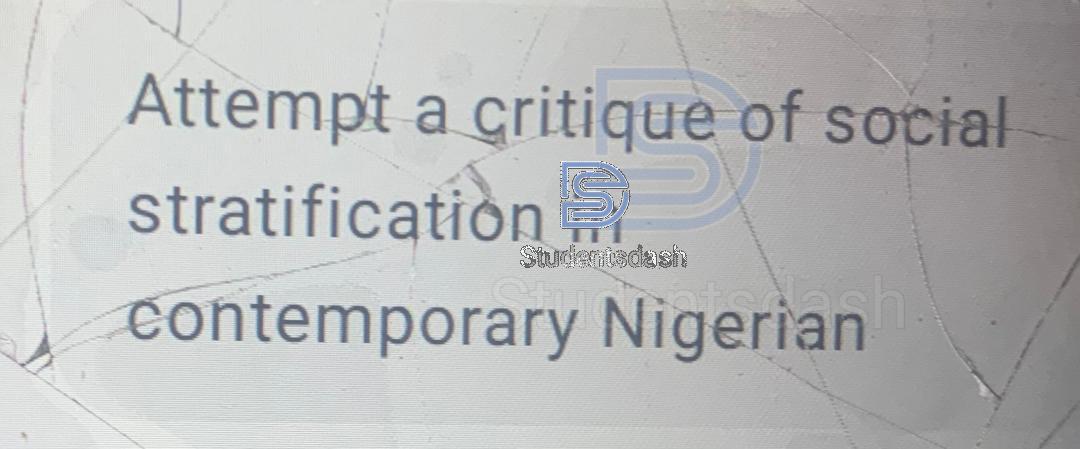HIR 415 Assignment Questions and Answers
HIR 415….. Dr. Mbam…… Question: One Man’s terrorist, is another man’s freedom fighter. Discuss the viable examples.
Submit on Wednesday 26th Feb 2025.
Also prepare for the defense.
One Man’s Terrorist Is Another Man’s Freedom Fighter: A Discussion with Viable Examples
Introduction
The phrase “One man’s terrorist is another man’s freedom fighter” describes how groups and individuals engaged in violent struggles are seen differently depending on perspective. A group fighting for self-determination may be celebrated by its supporters as heroes but condemned by opponents as terrorists. This difference in perception is often shaped by political interests, media narratives, and ideological beliefs.
This paper explores this concept by discussing historical and contemporary examples of groups and individuals who have been labeled as both terrorists and freedom fighters. It will also analyze the factors that determine how these groups are viewed by different people.
Understanding the Concept
The term terrorism generally refers to the use of violence to create fear and achieve political, religious, or ideological goals. However, the definition is not universal. Some believe that using violence to resist oppression should not be classified as terrorism, while others argue that any form of politically motivated violence is terrorism.
For instance, many colonial powers labeled independence movements as “terrorists,” while the people fighting for freedom saw themselves as revolutionaries. Similarly, governments fighting insurgencies often call rebels “terrorists,” whereas their supporters see them as liberators.
Viable Examples of the Concept
1. Nelson Mandela and the African National Congress (ANC)
• During the apartheid era in South Africa, Nelson Mandela and the ANC were labeled as terrorists by the South African government. The ANC used sabotage and armed struggle to resist racial segregation.
• However, to black South Africans and international supporters, Mandela was a freedom fighter who stood against oppression.
• Years later, after apartheid ended, Mandela became South Africa’s first black president and is now celebrated as a global icon of peace and justice.
2. The Irish Republican Army (IRA)
• The IRA fought for Irish independence from British rule, using bombings and armed attacks.
• The British government and many Western nations labeled them as a terrorist organization.
• However, many Irish nationalists saw them as freedom fighters resisting foreign occupation.
• The 1998 Good Friday Agreement eventually led to a political resolution, and former IRA members became political leaders.
3. The Palestinian Liberation Organization (PLO) and Hamas
• The PLO, led by Yasser Arafat, was once labeled a terrorist group by Israel and the West for its armed resistance against Israeli occupation.
• Over time, the PLO gained international recognition, and Arafat won the Nobel Peace Prize for his role in peace negotiations.
• Hamas, which continues armed resistance against Israel, is labeled a terrorist group by the U.S. and EU, but many Palestinians see them as defenders of their land.
4. The Taliban and the Afghan Resistance
• During the Soviet invasion of Afghanistan in the 1980s, the U.S. supported the Mujahideen, calling them freedom fighters resisting communism.
• However, when the Taliban (which emerged from the Mujahideen) took power and later fought against the U.S. after 2001, they were labeled terrorists.
• This shift in perception shows how the label “terrorist” depends on political alliances and changing interests.
5. The Revolutionary Armed Forces of Colombia (FARC)
• FARC was an armed group in Colombia that fought against the government for decades, seeking social justice and land reforms.
• The Colombian government and the U.S. labeled them as terrorists due to their violent tactics, including kidnappings and drug trafficking.
• However, some Colombians saw them as rebels fighting against corruption and inequality.
• After peace negotiations, FARC laid down arms, and some former members joined politics.
Factors That Influence Perception
1. Political Interests: Governments and organizations label groups based on how their actions align with their interests. A group that fights against an ally is called a terrorist group, but if the same group fights a common enemy, it may be supported as a freedom movement.
2. Media Narratives: The way the media reports on conflicts shapes public opinion. Western media, for example, may portray a group differently than local media in the affected region.
3. Ideology and Religion: People’s beliefs influence how they see resistance movements. Those who share similar ideologies may see the group as heroes, while others see them as dangerous extremists.
4. Historical Context: Groups that were once labeled as terrorists sometimes become legitimate political organizations over time. Many world leaders, including Nelson Mandela and Yasser Arafat, were once called terrorists but later became respected statesmen.
Conclusion
The statement “One man’s terrorist is another man’s freedom fighter” is a reflection of how perspectives shape the way we view conflicts. Throughout history, groups that fought against oppression or foreign rule have been called terrorists by those in power, but they were seen as freedom fighters by those they represented. Political interests, media narratives, and ideological biases all play a role in shaping these perceptions.

